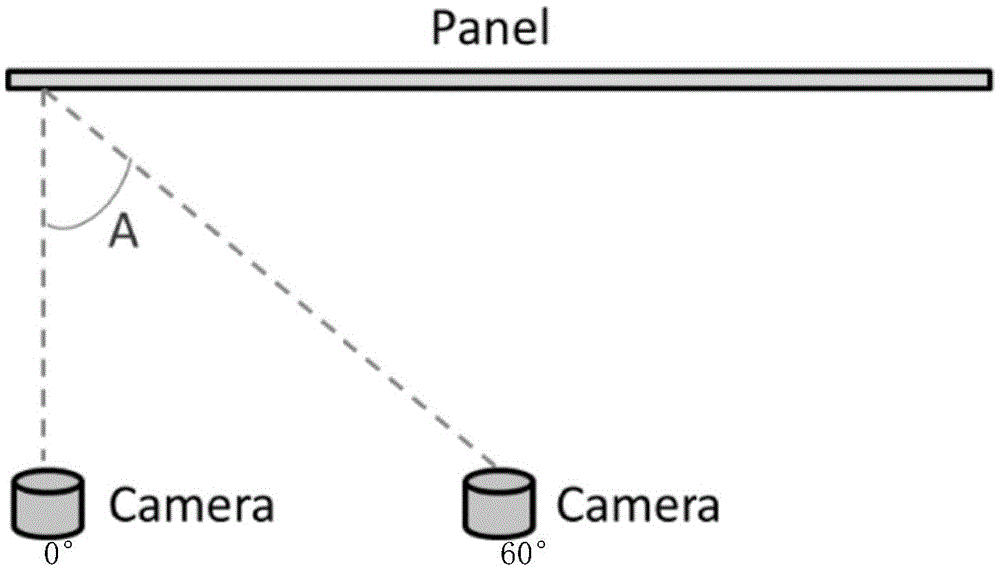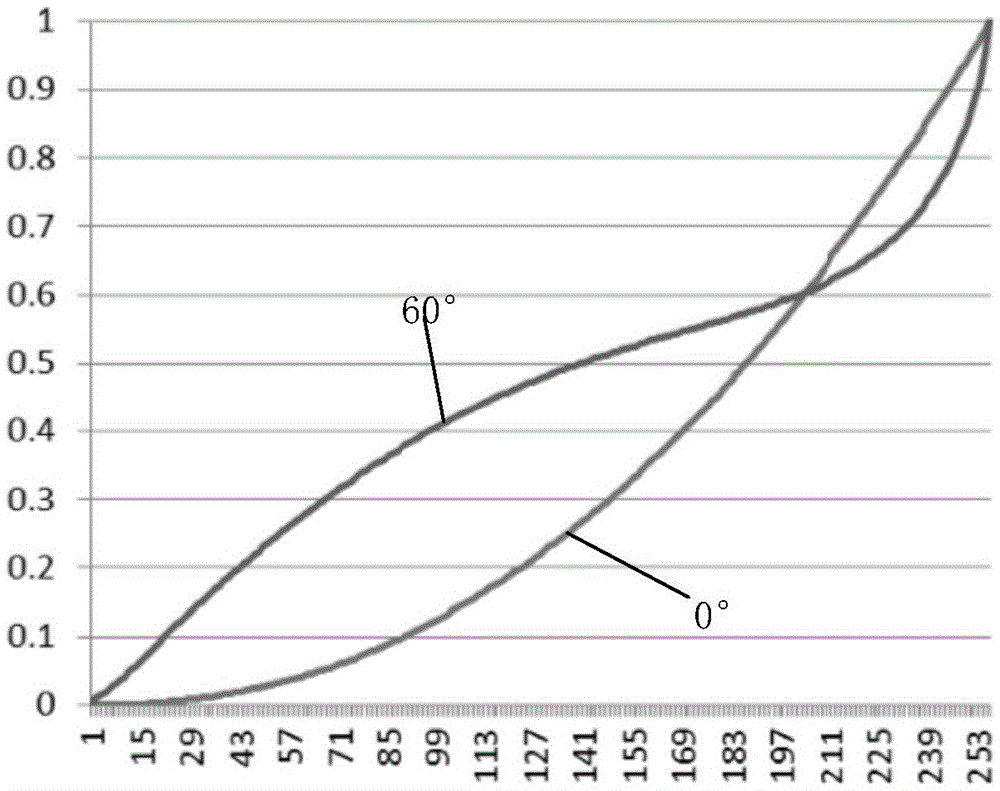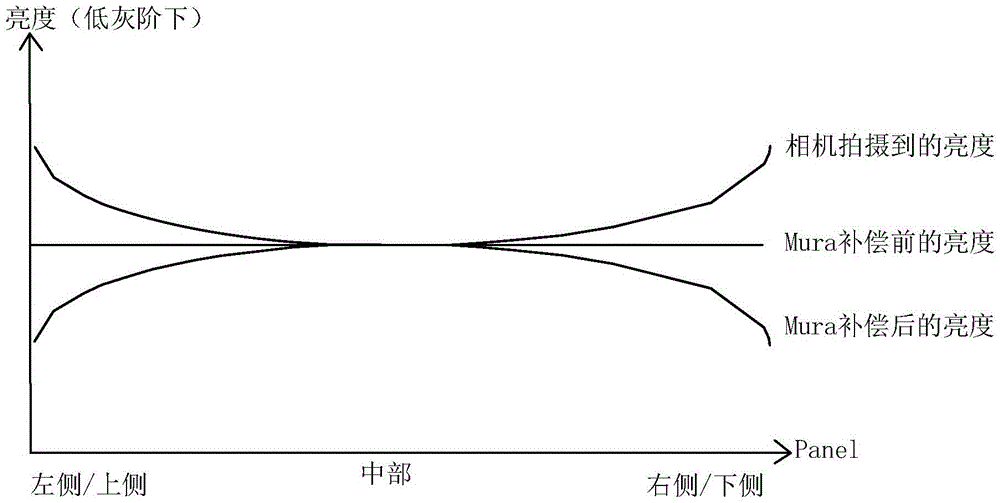Mura phenomenon compensation method
A compensation method and phenomenon technology, applied in the direction of instruments, static indicators, etc., can solve the problems affecting the product quality of LCD display panels and the low brightness of the front viewing angle in the area around the panel, so as to correct the adverse effects and improve the product quality.
- Summary
- Abstract
- Description
- Claims
- Application Information
AI Technical Summary
Problems solved by technology
Method used
Image
Examples
Embodiment Construction
[0035] In order to further illustrate the technical means adopted by the present invention and its effects, the following describes in detail in conjunction with preferred embodiments of the present invention and accompanying drawings.
[0036] see Figure 5 , the present invention provides a kind of Mura phenomenon compensation method, comprises the following steps:
[0037] Step 1, provide an LCD display panel and a camera, use the camera to take pictures of the LCD display panel displaying a certain grayscale picture directly above the center point of the LCD display panel, and obtain the brightness of the LCD display panel through the collected images data.
[0038] Specifically, the brightness data of the LCD display panel collected at this time will deviate from the actual display brightness of the LCD display panel due to the different viewing angles of the camera on each position on the LCD display panel. For different display grayscales, the LCD display panel The de...
PUM
 Login to View More
Login to View More Abstract
Description
Claims
Application Information
 Login to View More
Login to View More - R&D
- Intellectual Property
- Life Sciences
- Materials
- Tech Scout
- Unparalleled Data Quality
- Higher Quality Content
- 60% Fewer Hallucinations
Browse by: Latest US Patents, China's latest patents, Technical Efficacy Thesaurus, Application Domain, Technology Topic, Popular Technical Reports.
© 2025 PatSnap. All rights reserved.Legal|Privacy policy|Modern Slavery Act Transparency Statement|Sitemap|About US| Contact US: help@patsnap.com



